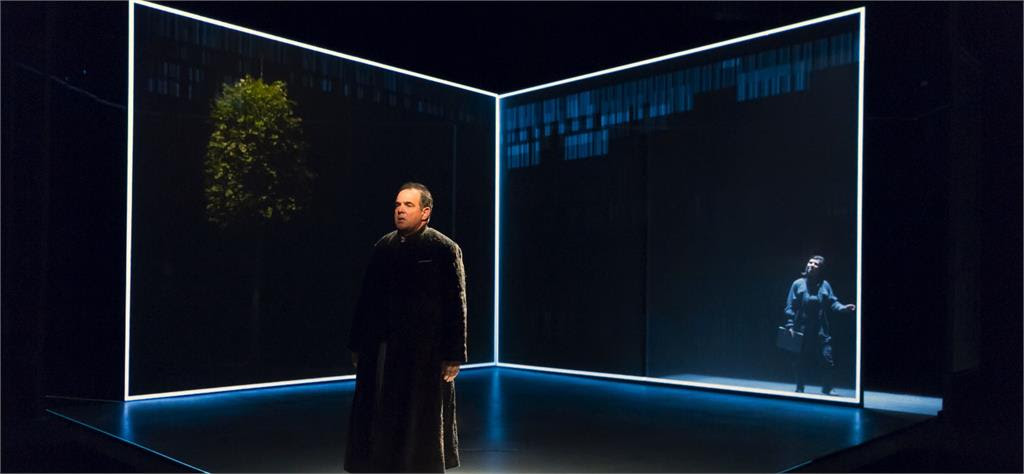Outside of this article, what other tabs do you have open? What are the sites you visit, the thoughts you post, the image that you try to portray to the world? Everything we do on the Web, every freedom it allows us that we take advantage of, shapes our digital identity. And in 2016, our digital identity is more important than ever.
Jennifer Haley’s The Nether, currently showing at Woolly Mammoth Theatre in Washington, takes this theme to the next level. The plot of this dystopian tale takes a while to fully wrap your head around. In the not-too-distant future, the Internet has been replaced by a more immersive descendant called the Nether, a virtual world that users can log on to and exist in as themselves or someone else. In the Nether, you can appear as anyone you want to be and do just about anything you want to do. Taking full advantage of this is a place within the Nether called The Hideaway. Run by a man named Papa (played by D.C. theatre star Edward Gero), The Hideaway is a resort-style destination that invites male visitors to live out some of their darkest desires. Essentially, The Hideaway is a safe place for men who like little girls.
Interactions at The Hideaway between Papa, his clients and a special 9-year-old named Iris (played with impressive skill by 18-year-old Maya Brettell) are woven throughout the play’s brisk 80-minute runtime, with real-world interrogations conducted by a female detective named Morris (Gabreila Fernandez-Coffey). Morris’ mission? Take down Papa and The Hideaway. And with the help of Doyle, a former client played by Paul Vincent O’Connor, she has found the man himself.
The setup means much of the play features Gero or O’Connor slumped over in a chair as Morris circles them with questions. Luckily, the casting here makes it so that these CSI-esque scenes turn into a clinic of acting with depth. Both Gero and O’Connor do fine work in that chair, answering each question with caution, their words carrying the weight of what is happening in their minds. Fernandez-Coffey is solid as Morris and Tim Getman plays a Hideaway visitor with subtle complexity, but the true highlights here come from the veteran savvy of O’Connor and Gero.
The acting is good, but the visual aspects of this play enter the realm of great. The set is cold and gray in the real-world interrogations and vibrant and teeming with possibility as the Nether. The use of projections on a background screen make for quick-changing landscapes but also the ability to slightly see characters behind the backdrop when the lighting so chooses. This glimpse of who someone hiding behind a screen is a beautiful metaphor for the way we’re always hiding behind something on the Internet. We each have a screen in front of us, in more ways than one.
Despite these aesthetic accomplishments, the Nether is still not a play that is easily enjoyed. The themes it deals with are dark, and the questions it asks are complex. The overt attempts to show us the pitfalls of our increasing attachment to the Web are also not much fun to stomach, but that is more of an accomplishment than anything to nitpick. More than that, the play explores the differences between thought crime and real crime, what really defines romantic connection and the idea of the physical body as a prison.
Sticking with the Nether as it takes deep dives into some of these complex questions is tough. But seeing that on the surface, this dystopia relates to our reality in very clear ways, is not.



